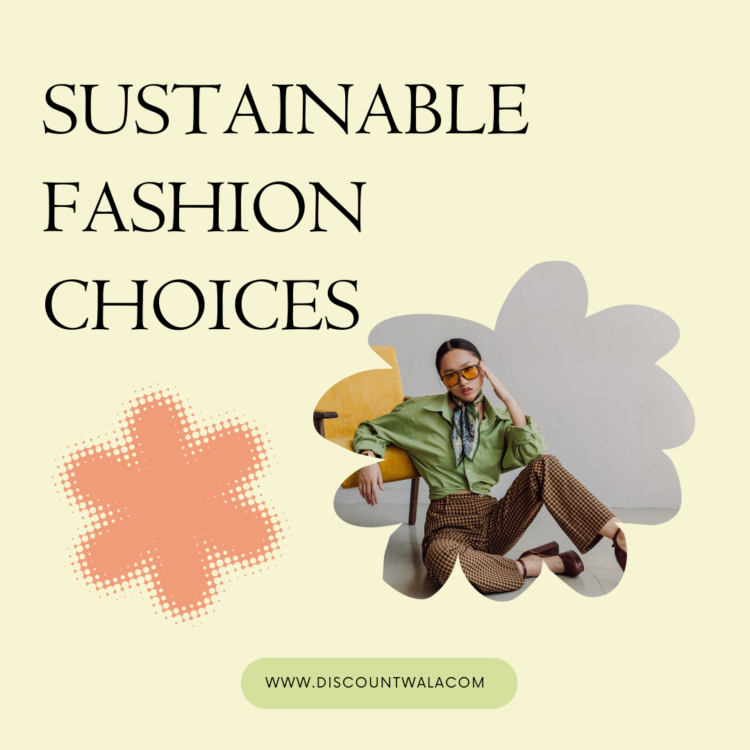In a world where fast fashion has dominated the industry for decades, there is a growing movement towards sustainable fashion. The environmental and social impact of the fashion industry has prompted individuals to reconsider their purchasing habits and embrace sustainable alternatives. In this blog, we’ll explore the significance of sustainable fashion choices and provide practical tips for cultivating a more eco-conscious wardrobe.
The Environmental Impact of Fast Fashion
Fast fashion, characterized by rapid production cycles and low-cost garments, has significant environmental consequences. From excessive water usage and pollution to the generation of textile waste, the fashion industry’s environmental footprint is substantial. Sustainable fashion seeks to address these issues by promoting ethical and eco-friendly practices.
1. Understanding Sustainable Fashion
a. Ethical Production Practices:
Choose brands that prioritize fair labor practices. Look for certifications such as Fair Trade or commitments to ethical manufacturing processes. This ensures that workers are treated fairly and work in safe conditions.
b. Eco-Friendly Materials:
Opt for clothing made from sustainable materials such as organic cotton, Tencel, or recycled fibers. These materials have a lower environmental impact compared to traditional ones like conventional cotton or polyester.
c. Quality Over Quantity:
Embrace a “less is more” mentality. Invest in high-quality, timeless pieces that withstand trends and have a longer lifespan. This approach reduces the need for constant replacements and minimizes waste.
2. Embracing Secondhand and Vintage
a. Thrifting and Secondhand Shopping:
Explore thrift stores, consignment shops, and online secondhand platforms. Purchasing pre-loved items extends the life cycle of clothing and prevents them from ending up in landfills.
b. Vintage Treasures:
Incorporate vintage pieces into your wardrobe. Not only do they add a unique touch to your style, but they also contribute to a circular fashion economy by giving new life to existing garments.
3. Mindful Clothing Care
a. Gentle Washing:
Extend the life of your clothes by washing them with care. Opt for cold water, gentle cycles, and air-drying when possible. This not only conserves energy but also helps maintain the integrity of the fabrics.
b. Repair and Upcycling:
Instead of discarding damaged items, learn basic sewing skills to mend or upcycle them. Small repairs can significantly extend the life of your clothing, contributing to a more sustainable wardrobe.
4. Supporting Sustainable Brands
a. Research and Verify:
Before making a purchase, research brands to ensure they align with sustainable and ethical practices. Look for certifications, transparency about their supply chain, and commitments to reducing environmental impact.
b. Local and Independent Brands:
Support local and independent brands that prioritize sustainability. These brands often have smaller production runs, reducing excess inventory and minimizing their ecological footprint.
5. Capsule Wardrobes and Minimalism
a. Capsule Wardrobes:
Curate a capsule wardrobe consisting of versatile, mix-and-match pieces. This minimalist approach promotes conscious consumption, as you focus on quality essentials rather than accumulating numerous items.
b. Renting and Borrowing:
For special occasions, consider renting clothing or borrowing from friends. Renting reduces the demand for new items, allowing you to enjoy fashion without the long-term commitment.
Conclusion
Sustainable fashion choices empower individuals to contribute positively to the planet and support ethical practices within the fashion industry. By making mindful decisions about what we wear and where we choose to invest our money, we can collectively shift towards a more sustainable and responsible approach to fashion. Let your wardrobe reflect not only your personal style but also your commitment to a greener, more sustainable future.










No Comments
Leave Comment